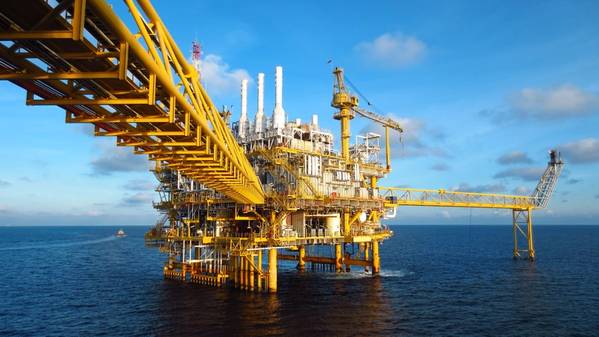
Senior representatives from “thought leaders” ABS, DNV GL and Lloyd’s Register weigh in on some of the top class and regulatory issues facing the offshore industry today, from decommissioning and decarbonization to cyber security, unmanned surface vessels and beyond. And what discussion of regulatory matters would be complete without at least some mention of Brexit? These topics and more are explored by Matthew Tremblay, ABS Vice President – Global Offshore Markets; Liv Hovem, DNV GL Oil & Gas CEO; and Mark Tipping, Lloyd’s Register Offshore Technology Manager, in the following roundtable discussion.
 From left: Matthew Tremblay, Liv Hovem and Mark Tipping
From left: Matthew Tremblay, Liv Hovem and Mark Tipping
With all the financial cuts that have taken place in the past four years, has cost compromised safety?
Hovem: We recognize that the industry has been under immense pressure to cut costs and improve efficiencies in the last few years. This has resulted in examples of cost savings such as maintenance and training expenditure being deferred. It is too early to say whether this has resulted in reduced levels of safety performance, as the impact of these cost saving measures is not immediate in terms of a safety impact. Last year, we published a ‘State of Safety’ white paper, following our annual industry outlook survey. We found that nearly half (46%) of the 800 senior professionals that were questioned believed there had been under investment in inspection and maintenance of facilities and equipment the year before.
One could argue that the industry could never spend enough on maintenance, however. We believe that the industry is well aware of the implications of cutbacks or deferral of maintenance, and their potential impact, not only on safety, but also on production efficiency.
Despite the impact of cost cutting measures across all areas of the oil and gas industry, safety and environmental management should never be compromised.
Tremblay: In general, we observe that offshore operators have done a good job as an industry in optimizing their performance without sacrificing safety standards. Many companies, including ABS, have been able to focus on optimizing capacity without negatively affecting capability. For example, the opex efficiencies gained in drilling have been made through improved asset integrity management which has enabled cost reductions. From the numbers we see, this has not contributed to an increase in unplanned incidents related to safety.
Tipping: The downturn has put pressure on all aspects of the industry, however our engagements across our clients have always looked to ensure safety, and where necessary invest in new solutions, this of course being particularly attractive if the ‘win win’ involves a safety enhancement and cost saving. Utilizing technology to remove people from hazardous locations, and hence improve safety, is one of the key strategies. LR aims to promote safety even further with its Safety Accelerator program led by the LR Foundation.
As offshore decommissioning activity ramps up, do you see regulatory or technical shortcomings that need to be addressed?
Hovem: 100 offshore platforms and 5,700 kilometers of pipeline are forecast to be decommissioned or reused over the next decade on the UK continental shelf (UKCS), with the Oil and Gas Authority (OGA) estimating the total cost of oil and gas decommissioning to be £58 billion ($73.4 billion). The UK regulator has set a cost reduction target of more than 35%. The challenge is that when the oil price is high, operators push back abandonment, and this makes planning of decom programs difficult, particularly where operators may wish to share the costs of decommissioning capabilities, such as heavy lift vessels.
The economic burden of decommissioning liabilities has long been the subject matter of debate in the UKCS. Historically, oil and gas companies were able to access tax relief on their decommissioning costs. This was wholly dependent on their tax payment history. This put new entrants, who do not have a tax history, at a disadvantage
From November 1, 2018, a new transferable tax history (TTH) regime was initiated to provide transfer of tax history between buyers and sellers of late life assets in the UK, to maximize tax relief for decommissioning expenses. This allows a seller to transfer some of its tax history to the buyer. This subsequently allows the buyer to set the decommissioning cost against the TTH. It will be available for license transfers that receive OGA approval. Even so, there is still lack of UK public limited company (PLC) investment focusing on removal of redundant infrastructure. An industry led resolution will not deliver the optimum decommissioning solution.
The OGA has set out three priorities for decommissioning, cost certainty and reduction; decommissioning delivery and capability and decommissioning scope, guidance and stakeholder support.
The market undoubtedly is mature, opportunities are abound and innovation will be central to the efficiencies expected by the OGA.
From a technology perspective, there is lack of investment in dedicated plug and abandonment rig and associated supply chain capacity and capability for the full range of well types and depths required. As favorable oil price returns, costs may rise for decommissioning in line with increased rig utilization.
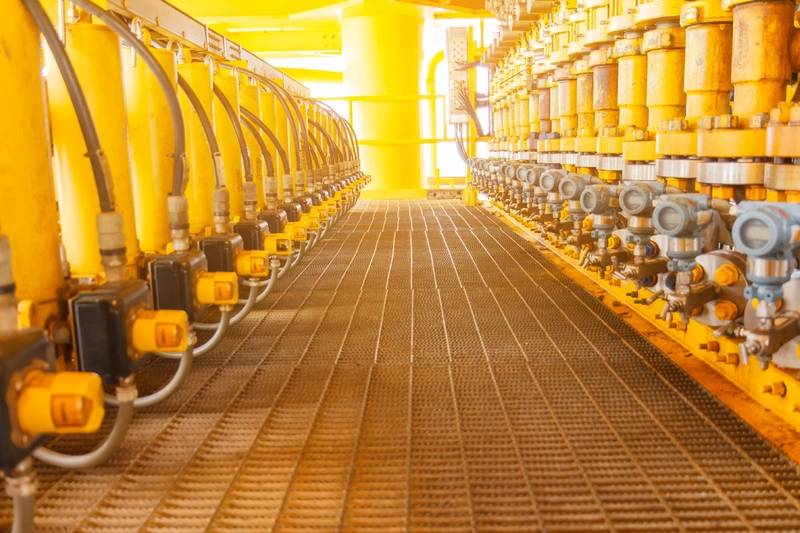 © Santi Sopa / Adobe Stock
© Santi Sopa / Adobe Stock
Many see new digital solutions as the next wave set to shake up the offshore industry. From your point of view, what are the greatest benefits – and challenges – posed by digitalization?
Tipping: Cost and safety – both can be positively impacted by digital solutions. Analytics have the potential to help predict future behaviors at the equipment and system level ahead of an event occurring. This provides considerable advantage in that damage can be avoided to equipment or systems optimized for future predicted parameters. Additionally, crew can be prevented from entering an area where they may be exposed to harm in advance of the dangerous conditions occurring.
Tremblay: The ABS position is that digital is an enabler not an end or a solution in itself. It is there to enable the right solutions. The benefits of digitalization from an ABS perspective are related to greater transparency and availability of more detailed and timely data relative to asset performance and health, whether for performance improvements and integrity, or the optimization of survey and inspection. It all feeds into the ability to better inform owners and class on the real time condition of assets.
The risk for the industry is that we are applying new technologies at the fastest pace ever seen and this could be getting ahead of our understanding of the potential scale and complexity of the risks that might result. The systems of statutory regulation we have had in place for a long time may struggle to keep up with the pace at which new technology is being incorporated. This is something we as an industry need to be very aware of and understand how to manage the risks as a community, with class and industry groups working together with statutory bodies so that we continue to deliver these changes safely.
Hovem: There are so many fascinating things happening in the industry right now. Digitalization is opening up new opportunities that were previously unthinkable. Cloud solutions, the Internet of Things, artificial intelligence (AI), data volumes, remote services, autonomy, advanced robotics and velocity, for example, are causing a transformation toward enhanced efficiencies, transparency, new decision models and new ways of working together. Expertise in physical systems and their operations must be combined with deep knowledge of data and information technologies to realize new possibilities.
As new technologies are causing significant changes, it is crucial for businesses to take the right steps in the challenging transformation toward a digital environment. If they fail to do so, their competitors who do adapt will leave them far behind.
With new technologies come other risks that were not there previously and that organizations need to be resilient against. That is where cyber security plays an important role to ensure operators are not vulnerable to attacks.
Where are the industry’s main weaknesses in terms of cyber security, and is enough being done to counter?
Tremblay: While shipping and offshore have focused their efforts at information technology (IT) improvements in the last few years, both sectors are still coming to terms with cyber risks in the context of operational technology (OT), and there is much more to be done. Even some companies with advanced IT capabilities are coming to terms with the improvements in policy and practice they need to make to manage OT cyber risks, in their own operations and those of vendors and suppliers with whom they are integrated. ABS is highly focused in the area of OT cyber risk, providing training, evaluation and advisory services in the marine and offshore sectors.
Tipping: According to the International Energy Agency (IEA), companies and public spending in cyber security is insufficient, driven by an underestimation of the threat. Due to the lack of cyber security in standard Supervisory Control and Data Acquisition (SCADA) communication technology, the offshore industry remains highly vulnerable to attack, and the existing policies and regulations do not seem adequate to tackle these issues.
Cyber security in offshore environments should relate to real time requirements, with cascading effects, and combining legacy systems with new technologies.
Unfortunately, most of today’s offshore facilities are managed by industrial control systems designed with efficiency in mind rather than security. An increasing number of legacy components are also connected to the internet, which makes them more efficient and cost effective, but also more vulnerable to cyber-attacks. Additionally, for new projects, cyber security requirements are not clearly defined in construction contracts or are covered in service agreements, which are usually discussed at the final stages. Retrofitting a non-secure SCADA system costs far more than installing the correct security measures up front.
To counter the cyber security challenges despite the shortage in spending, the offshore sector must take a systemic approach and assess cyber security risks across the entire supply chain.
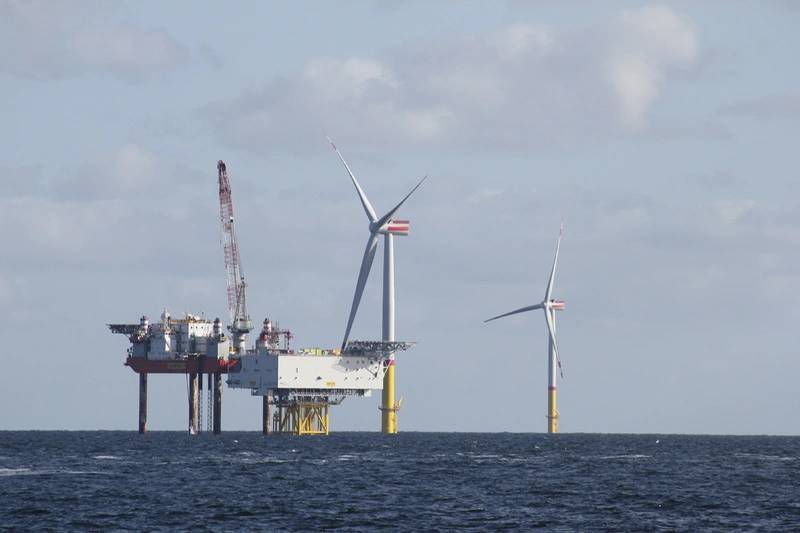 © Zacharias / Adobe Stock
© Zacharias / Adobe Stock
From your perspective, how mature is the offshore renewables industry in terms of risk and safety? Where could more be done to improve?
Hovem: The maturity level of offshore renewables has increased tremendously over the last decade. Turbine size is constantly increasing and frequently requires completely novel technologies to be applied. Everything new brings potential risk. Will it work? Will it be safe? Will it deliver the power outputs and financial returns predicted? One of the key tools in mitigating risks is the development of technical standards which keep pace with the rapid technology developments and the certification against these standards. In order to fulfil this purpose in an increasingly price sensitive environment, certification will have to evolve from a compliance-based to a state-of-the-art, risk-based approach.
Tremblay: From what we observe, the maturity of the offshore renewables industry is no different to the mainstream offshore energy industry. Offshore renewables is in effect a business and engineering offshoot of many of the technical resources that have been proven in offshore operations.
Risks are evaluated through a similar safety case methodology, while class and other statutory approvals are undertaken in a very similar way to the marine and offshore sectors. The end product is different, but we don’t see much difference between offshore wind and wave technology and offshore drilling and production; both rely on the development and approval of once novel technologies that become proven and accepted into everyday operations.
The design, operation and maintenance of high-pressure, high-temperature (HPHT) wells is an important topic for many in the industry today. What key challenges persist in this area that regulation and class can help address?
Hovem: HPHT, as defined today, is a novel environment for which the industry has been working diligently to develop and qualify equipment so that it performs as expected, in a safe and reliable manner. Over the past few years, equipment manufacturers, operators and service companies have identified technical challenges and new failure modes and mechanisms for which current technical standards do not give guidance for. Hence the need to execute proper technology qualification process where the risk assessments are performed in the light of the new loading conditions. The Bureau of Safety and Environmental Enforcement (BSEE) in Gulf of Mexico have developed a guideline to provide clarity to what the US government will require to approve for the drilling and production of a HPHT well. The American Petroleum Institute (API) is also focusing efforts to expand that knowledge through industry collaboration and may be able to address technical challenges such as fatigue, material selection and qualification, and others.
Do you see instances where technology has outpaced regulatory development? Or vice versa?
Hovem: Most of the concern that exists in this area relates to the ability of regulators and regulations to keep pace with the rapid changes arising from digitalization. Remote operations, remote survey and inspection techniques, and the potential autonomous operations are all examples of where technology is changing faster than regulation. Many of these new digital solutions also open up new risk areas such as cyber security, which is another example of where new challenges to existing risk management practices arise.
Tipping: Autonomous ships, at least at the smaller end, are now with us, and the classification – LR already provides extensive rules and guidance in this regard – and regulatory needs have been identified and are being enacted. This is not as clear with the floating offshore industry. While fixed structures employing unmanned approaches have been in service for several years, floating offshore structures are different, with different needs and highly complex hydrocarbons processing plants. This need is becoming clear as many of the new projects look toward unmanned floating production, storage and offloading unit (FPSO) scale facilities.
And, while aspects of the marine autonomous requirements are applicable in many instances, it does not provide a complete and tailored approach. LR have recognized this need and will be releasing proposed requirements in this area and will also be keen to work with and engage with the coastal state and flag state authorities to provide a consensus approach to this fast-moving area.
Is more widespread industry collaboration needed to tackle new or persistent challenges? Please give an example.
Tremblay: If there is a particular opportunity for enhanced collaboration it is around the challenges in application of new technologies, a particular example being the concept of the digital twin, where a successful and accurate outcome requires the input and agreement of designers, operators, owners and regulators, in order to deliver the potential benefits.
The only way to realize the benefits from a digital asset management tool like the digital twin is to have all these stakeholders aligned with the intended outcomes and objectives of the technology, whether that is performance optimization, environmental impact or survey and inspection planning.
Tipping: Collaboration has always been important and historically differentiated the best from the rest. However, collaboration is now a hygiene factor necessary to manage complex issues that bridge multiple stakeholders, deliver high levels of efficiency required to remain competitive within the industry and innovate to continually improve performance.
So, what is meant by widespread collaboration? The pooling of information and insight from a wide group of stakeholders for the general good. We do see leading companies sharing insights and coming together to improve safety, the environment, human rights and society. A good example of this is the Oil Companies International Marine Forum (OCIMF) which over many years has implemented a framework that addresses the safety of ship staff, terminal staff and the environment leading to significant industry-wide improvement.
Hovem: Yes. We cannot work in separate silos anymore. Technological leaps often require industries that were previously separate to work more closely together and learn from each other. We have to think differently about collaboration and system integration.
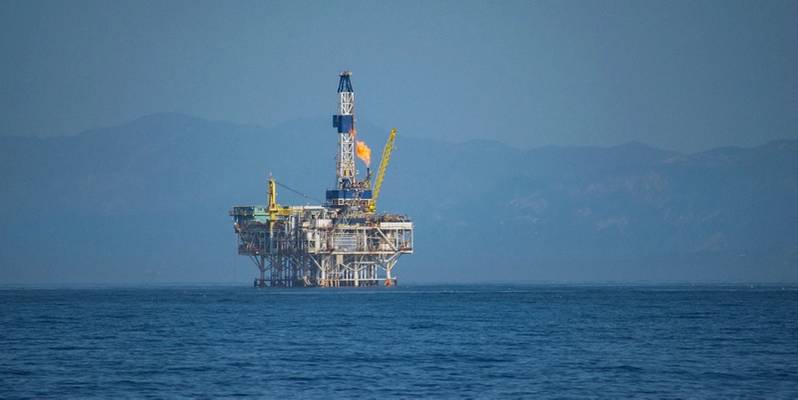 © Cindie / Adobe Stock
© Cindie / Adobe Stock
Please discuss a particular regulatory development underway globally that you see as especially important.
Tipping: The offshore industry by its nature has a more fragmented regulatory makeup. A more interesting dynamic within the industry is decarbonization of production. Discussions with numerous companies have shown a deep awareness of the need to address the carbon issue which may seem at odds with a hydrocarbons industry. However, all energy models show hydrocarbons as being a major partner in energy provision well into the future, hence the need to demonstrate a responsible model for the carbon dioxide (CO2) that is released. Many companies are looking to ensure minimum CO2 release in production. In fact, many organizations believe that future sanction of projects may indeed need to demonstrate this or carbon offsets to get regulator approval in the future.
Tremblay: ABS has been active in helping companies understand, prepare for and comply with numerous environmental regulations and/or core priorities long term are making the necessary preparations for the low carbon economy. One of the most important elements to this work is the management of safety during the transition and afterwards. Decarbonization will mean radical changes for the way the industry operates, and our priority is to help industry maintain safety as these changes take place.
We are undertaking several initiatives that will make a major contribution to a more sustainable industry moving forward. We are working across a number of categories including the use of digital technology which will be a key enabler as well as the promotion of greater efficiency, the use of alternative fuels and new energy sources. Each one of these categories has multiple projects within it and includes timelines and pathways to adoption.
Hovem: A key development, without question, is the UK decision to leave the European Union (EU). Article 50 was enacted in 2017 and the government has ratified the European Union (Withdrawal) Act 2018, which will remove the power of EU law over UK domestic law following the UKs withdrawal from the EU, subject to adaptation as required.
From a regulatory perspective, it is unlikely that Brexit will have any impact on the structure of UK upstream oil and gas and its governing legal regime, including the licensing system. The regulatory framework applying to the to the upstream industry, particularly the environmental and health and safety regulation, is highly developed independently of EU law, and at this stage, the industry’s view is that any impact is likely to be minor. The UK offshore safety case model was used as an exemplar by the EU when it considered the development of offshore directives post Macondo, so it is very unlikely to change.
Downstream, the impact will largely be determined, dependent on whether the decision is taken to participate in the single European gas market.
There is no doubt the situation in the UK leads toward a period of uncertainly weakening investor confidence, and the probability of exposure to charges and restrictions on the import of goods and services. There is also the possibility of Scottish referendum being reinstated following the UK exit from the EU.
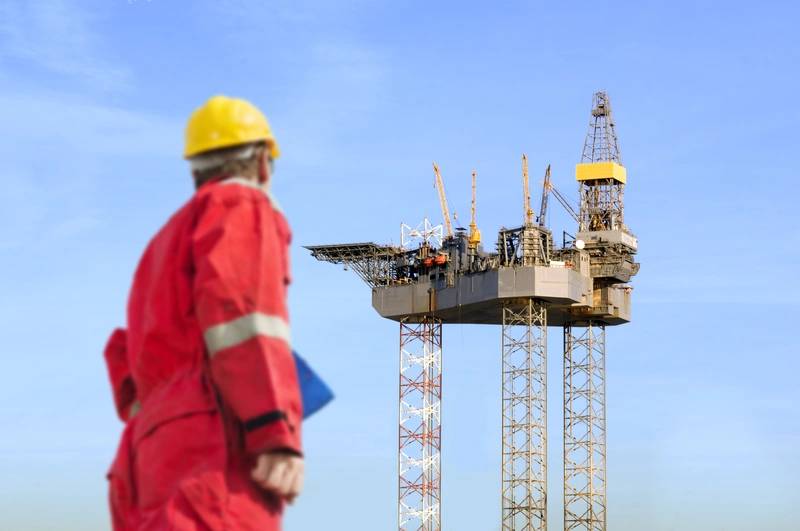 © corepics / Adobe Stock
© corepics / Adobe Stock
In terms of offshore focused R&D, what tops the agenda at your organization?
Tremblay: One of the areas that tops the agenda at ABS is the development of new inspection technologies, including remote inspection technologies and the use of Machine Learning and Artificial Intelligence tools in our inspection and survey processes.
In particular, we are currently completing feasibility studies into the application of AI to image recognition in order to better identify corrosion in marine and offshore assets.
The use of technologies such as drones is being developed to reduce the risks of manned entry to tank spaces, together with technologies such as LIDAR image scanning, all of which contribute to enhancing capability and increasing safety in structural inspection.
ABS has undertaken numerous trials of remote inspection technologies, including an inspection using a UAV, the results of which clearly demonstrated the potential benefits. We believe remote survey can provide immediate operational improvements such as optimized scheduling, which helps to foster an efficient survey process for class and owner alike.
Tipping: In terms of focused R&D, the agenda is to take cost out of operations without negatively impacting safety. Hence the push is to reduce or eliminate the permanent manning of facilities in continuous production operations. This drives to the development of systems that have the reliability and resilience for long-term isolated operation, this however is not as simple as deploying advanced control systems, it comes down to a fully integrated design and operations philosophy that to date has struggled to bridge the capex and opex project phases.
Not only does equipment need to be selected for long service life with minimum intervention but also how this can be accomplished in discrete maintenance windows. The best solution is to eliminate the need for equipment, however where this cannot be done for example elements exposed to the marine environment new approaches to how we consider efficient design occur; for example the hull of a floating facility might be considered for optimization to reduce steel weight – however in operation this may lead to higher stress values, greater criticality around corrosion and a consequent higher cost of ownership which is especially impactful if the intent is to operate with reduced or no manning. In conclusion while new technology, such as digital health management and maintenance analytics provide the key to unlocking these opportunities, it is their linking to the old technologies which will prove fundamental to success.
Hovem: There are a couple of projects for offshore which come to mind. WIN WIN is DNV GL's concept for a new generation of oil recovery technology. Using a wind turbine to power water injection systems will reduce costs, increase flexibility and avoid CO2 emissions. The oil and gas industry is under significant pressure to reduce both costs and emissions from extraction activities. Maximizing oil recovery from new and existing fields is therefore of paramount importance. Water injection is a frequently used and highly effective means of improving oil recovery from oil reservoirs. However, conventional methods entail high power consumption, significant emissions and costly infrastructure.
Secondly, we have developed a new a solution that reduces the risk of offshore floating vessel mooring line failure going undetected by replacing physical sensors with a machine learning algorithm that accurately predicts line failure in real time. The DNV GL team developed the Smart Mooring solution by training a machine learning model to interpret the response of a vessel’s mooring system to a set of environmental conditions and are then able to determine which mooring line has failed.